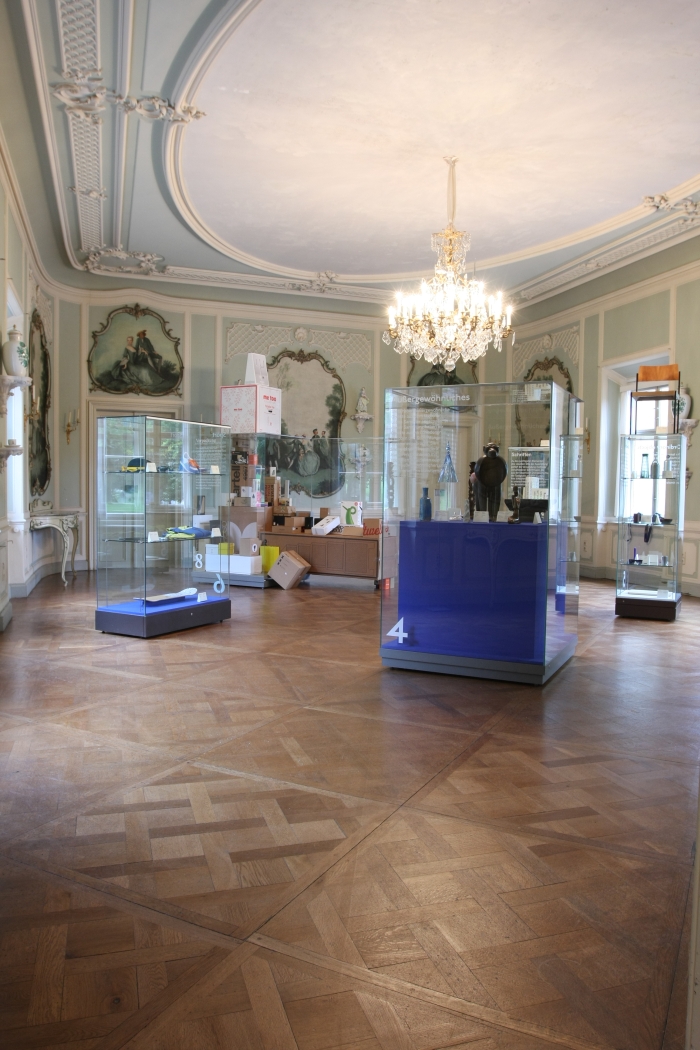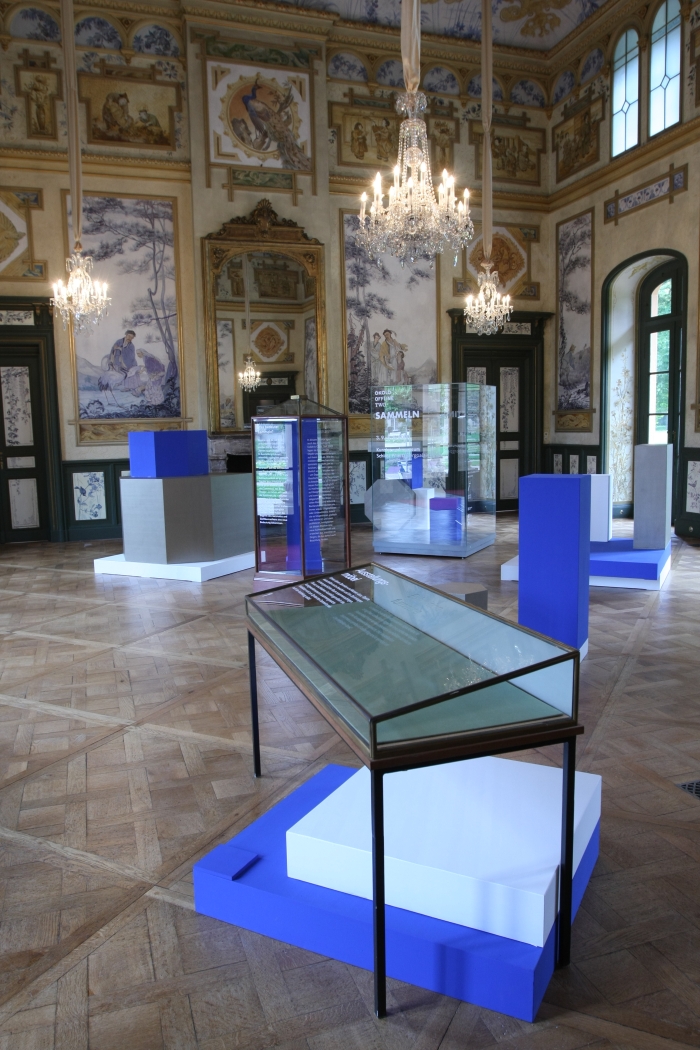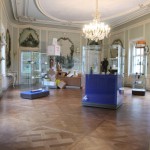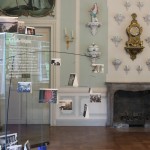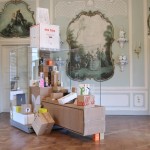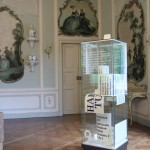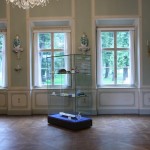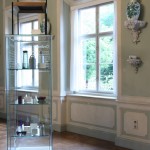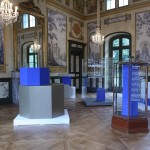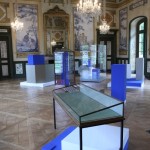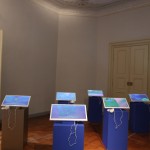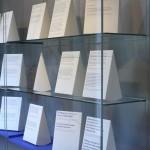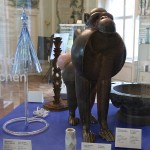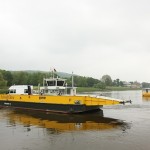Okolo Offline Two – Collecting at the Kunstgewerbemuseum Dresden
By way of an addendum to our “Five New Design Exhibitions for September 2014” post, until November 2nd the Kunstgewerbemuseum Dresden are presenting the exhibition Okolo Offline Two – Collecting.
Organised by the Kunstgewerbemuseum in collaboration with Depot Basel, “Okolo Offline Two” follows on from the exhibition Okolo Offline held at Depot Basel in April this year. As with Okolo Offline One the central pillar of Okolo Offline Two is formed by the Prague based creative collective Okolo and their design blog okoloweb.cz. Initiated in 2009 as a platform through which Okolo could share their passion for design, the website has grown over the intervening five years into a thoughtfully curated collection of those objects, events and ideas that inspire, amuse and interest them.
However, whereas Okolo Offline One took the virtual online collection and transformed it into a tangible offline collection, Okolo Offline Two reverses the process and presents an offline collection of objects specially curated by Okolo for the Dresden exhibition and which over the coming eight weeks will be transformed into an online collection.
Divided into four sections Okolo Offline Two opens with, well, to be honest, a collection of empty museum display cases and pedestals – the things in and on which museum collections are traditionally displayed. The medium, if you will, via which museums communicate with visitors, through which they define what is important; but which in Dresden become objects in their own right, and thus are guaranteed to confuse one or the other unsuspecting visitor. We hope no one is so confused they give up and go and look at the fountain in the garden instead, for aside from neatly setting the context of the exhibition and presenting the background texts to help one understand the rest of the exhibition, the cabinets quickly give way to firstly a collection of short, one minute, videos on design history by Okolo and secondly collected opinions on collecting, before reaching that part of the exhibition which can justly claim to be called Okolo Offline.
Over the course of four days Jakub Štech, Adam Štech, Jan Kloss and Matej Cincera from Okolo and Matylda Krzykowski, co-curator of the exhibition and co-founder of Depot Basel, trawled through the Kunstgewerbemuseum depots looking for objects which caught their attention, appealed to them or otherwise stood out. Built a collection from the collection, as it were. A collection to which Okolo added objects from their own collections, and which is presented in six thematic groups: packaging design, sport equipment, typefaces, experiences, everyday objects and unique objects. The last two of which being for Adam Štech the themes which best capture the essence of Okolo, “We are very interested in the history of design and for all the slightly more unusual objects that were perhaps created at the same time as the more famous, mainstream, classics but which were overlooked in their day. And also faceless industrial objects, objects which don’t give any clues as to where they come from or when and so which express a certain timeless universality”. To this end the everyday objects cabinet contains works such as, for example, a pewter beaker by Erich Hempel, a wooden bowl by Margarethe Hofmann, a Swiss army knife and a pair of Ray Ban sunglasses. Elsewhere visitors can enjoy objects as varied as the glass lamp Hadovka by Prague based design studio Dechem, Kartell, Magis and Vitra packaging, a contemporary steel ice axe and King Drill – a stoneware Baboon. And its fair to say the favourite exhibit amongst all involved in the exhibition.
“As soon as we saw the baboon we knew he was going to be in the exhibition” says Matylda Krzykowski, “we were still working on finalising the exhibition concept, but the baboon was in!”
In addition to presenting the objects in Dresden Okolo will also publish photos of the objects on their blog. That the photos are often of the objects by themselves and have been taken at various locations around the museum rather than in the display cabinets, the online collection will only resemble the offline collection in that in contains the same objects. Context, relationships, relevance being not only different but not always immediate. Thus as with Okolo Offline One the Dresden exhibition also neatly highlights the differences between viewing design online and offline. And as we noted from the exhibition in Basel, offline is always better.
Isn’t however always possible.
Most readers of this post, for example, wont be in the close vicinity of Dresden this autumn and so will only have the online collection.
And from November 3rd, when the objects are packed up and back in to the museum archive, we will all only have the online collection. And while the online collection offers an alternative option to view the exhibition, it also makes clear the issues associated with such.
“It used to be the case that if you wanted to see an exhibition you would have to go to a museum”, says Matylda, “these day museums are putting ever more of their collections online, but it remains that decisions about what a museum should collect, what is displayed and how it is displayed remain decisions undertaken by a relatively small number of individuals”
Most museum collections famously began with, or largely became filled through, objects collected by the first travellers and adventures returning from far off climes with those things that appealed to them. Thus a rich elite decided what the masses should learn about our world, what was important and should be viewed in an anonymous glass cabinet. That elite may have become poorer and more scientific, but in principle little has changed.
What has changed is that our digital age poses new questions about what is collectable. The V & A museum in London for example were recently the subject of a few sneering newspaper reports because they added the computer game Angry Birds to their permanent collection. But is a game app less culturally valuable than a chair, Polynesian sculpture or ivory fan?
The digital age has also changed the nature of collecting at a private, personal level. Collecting has become easier and in many ways more democratic; we can all find and collect those objects, musicians, art works we like and store them virtually. Or at least those of us with internet access can. It has however also become an increasingly passive process; music being added to our collections as recommendations from friends or photos being automatically added to our virtual collection because we subscribe to #gingercat. But are all cat photos worth collecting? Ginger or otherwise.
Ultimately, how should one collect?
Okolo Offline Two demonstrates how Okolo approach the topic and where the process takes them. It’s not definitive, it’s just one approach.
The visitor is left to come to their own conclusions, decide for themselves what they want, what is important, both in context of how they wish museums to collect and in context of their own collecting habits, be that stamps, toy cars, expressionist art or points on your driving licence.
“I hope visitors leave with new perspectives on the objects that surround them and how connections between objects can tell stories”, says Adam, “but also that collections needn’t just be physical things, they can also be, for example, ideas or experiences, which is why we have a display cabinet here with photos of some of the good times we’ve shared as Okolo over the years.”
Good times in which we can all share, and hopefully add to through our own experiences with the results of Okolo’s collecting habits. Be that offline in the Kunstgewerbemuseum Dresden or online. Wherever that may be.
Okolo Offline Two runs at the Kunstgewerbemuseum, Schloss Pillnitz, Dresden until November 2nd 2014, as does the museum’s second special exhibition Trading Places. Designers meet the collection.
Full details can be found at www.skd.museum
- Okolo Offline Two – Collecting at the Kunstgewerbemuseum Dresden
- Okolo Offline Two – Collecting at the Kunstgewerbemuseum Dresden. Experiences.
- Okolo Offline Two – Collecting at the Kunstgewerbemuseum Dresden. Packaging.
- Okolo Offline Two – Collecting at the Kunstgewerbemuseum Dresden. Typefaces.
- Okolo Offline Two – Collecting at the Kunstgewerbemuseum Dresden. Sport equipment.
- Okolo Offline Two – Collecting at the Kunstgewerbemuseum Dresden. Every day objects.
- Okolo Offline Two – Collecting at the Kunstgewerbemuseum Dresden. Display cabinets.
- Okolo Offline Two – Collecting at the Kunstgewerbemuseum Dresden. Display cabinets.
- Okolo Offline Two – Collecting at the Kunstgewerbemuseum Dresden. Videos.
- Okolo Offline Two – Collecting at the Kunstgewerbemuseum Dresden. Opinions on collecting.
- King Drill. And theb lamp Hadovka by Decehem.
- Because we like it: the Schloßfähre that brings you to the Kunstgewerbemuseum Dresden.
Tagged with: Dresden, Kunstgewerbemuseum Dresden, Okolo Offline
